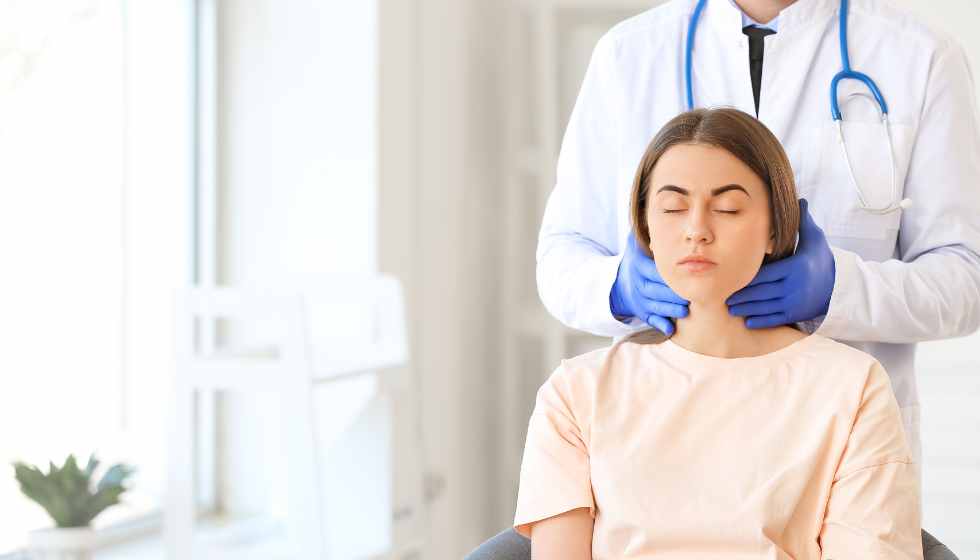

Even if it does not systematically announce a serious pathology, the appearance of a small palpable ball on certain areas of our body is not to be neglected. In case of chronic presence, it can alter our health.
A palpable swelling or lump in a lymph node (adenopathy) is a worrying symptom. When to worry? What examinations and imaging make it possible to make a diagnosis? What are the possible causes (infections, leukemia, autoimmune diseases, etc.)? From symptoms to treatments, the point with our expert.
Lymphadenopathy is a lymph node increasing in size (swelling) and becoming palpable (adenopathy). Lymphadenopathy is, therefore, a telltale symptom of lymph node disease. “The nodes are part of the lymphatic chain, that is to say, they drain the lymph. At various areas of the body such as the cervical, occipital (behind the ears), carotid (neck), axillary (armpits), elbow (epithrocleen), inguinal (groin fold) area”.
There are also lymph nodes deep in the body that are not palpable.
The lymphatic system is a circulatory apparatus comprising tonsils, spleen, thymus, lymphatic vessels, and the famous lymph nodes. This lymphatic system is involved in our immunity since it helps our body to fight against certain diseases. Thus, it is not uncommon to see swelling of the lymph nodes in the event of very common illnesses that affect our state of health, such as the flu, a cold, or angina.
A lymph node becomes palpable in case of an inflammatory, pathological process. A swollen lymph node is a sign of an infection or other illness.
The causes of lymphadenopathy are:
Patients consult because they feel a lump on palpation (adenopathy), for example, for classic breast cancer. The lymph node is palpable only from a certain size (beyond 1 cm). “Some swollen lymph nodes are visible to the naked eye, adds the specialist. For example, the left supraclavicular node, easily palpable, is generally a sign of digestive cancer (called Troisier’s node)”.
The swollen lymph node may be red and painful when it is a satellite node from an infection. The lymph nodes most at risk are those that patients describe as chronic and painless.
In a patient, the lymphadenopathy can concern a lymph node area, i.e., axillary, cervical, or inguinal, or several lymph node areas, as in the case of lymphomas (cancer of the lymph nodes).
The clinical examination takes on its full dimension to determine the impact of lymphadenopathy on our health. To establish his diagnosis and not miss any disease that could affect our health, the doctor must precisely examine the patient. It returns to the general state of health of the patient, if it is altered or not, if he has lost weight. In the case of a suspected disease such as lymphoma or tuberculosis, the patient may experience night sweats.
The doctor checks any trips made by the patient to rule out the risks of tropical infectious diseases, the concept of contagion, and unprotected sexual intercourse. He also checks the patient’s consumption of tobacco and alcohol, arthralgia, skin, or other lesions. He then examines the patient, feels all the lymph node areas of the body to identify any swelling, and looks at the characteristics and signs of the lymph node that prompted the patient to consult (the extent of the swelling, whether the node is firm or not, mobile or adherent, inflammatory or not).
To complete his clinical examination and establish his diagnosis, the doctor also has the patient perform a complete biological assessment to check the blood count (white and red blood cells and platelets), the CRP (in the event of inflammation), the calcemia and the electrophoresis of serum proteins (in the context of monoclonal gammopathy type IGM or IGG), infectious serologies (viral hepatitis, EBV, CMV, Lyme disease), antibodies: anti-nuclear, anti native DNA and ANCA.
On the imaging side, a cervical-TAP (Thoraco-Abdomino-Pelvic) scanner will allow a precise lesional assessment of the deep lymph nodes to rule out certain diseases such as lymphoma, sarcoidosis, infection, abscess, or other. Beyond the images, performing a surgical excision (surgical biopsy) in the context of deep adenopathy is possible. The clinical procedure is performed in a hospital setting.
The treatment of lymphadenopathy depends on the origin.
The prevention of lymphadenopathy requires regular self-examination by the patient at home to identify any appearance of symptoms such as swelling. But also by the implementation by the patient of a healthy lifestyle integrating a reduced or even zero consumption of tobacco and alcohol. Safe sex, up-to-date vaccinations, a healthy and balanced diet, and regular physical activity are integral to the preventive measures to avoid the risk of lymph node disease.
This post was last modified on February 10, 2025
Meticulous preparation and close attention to detail will guarantee that these worthwhile properties arrive at…
According to human psychology, humans think a lot and assume everything that is happening in…
The Face Roller Massager has many benefits, from relaxation to reducing all signs of aging.…
Moviezwap site is available on the internet; everyone can browse the moviezwap.org Hindi, Telugu, and…
Hodophile can be found all over the world, and they come from all walks of…
If you're trying to get pregnant, it's worth thinking about improving your diet. Avoid sausages,…